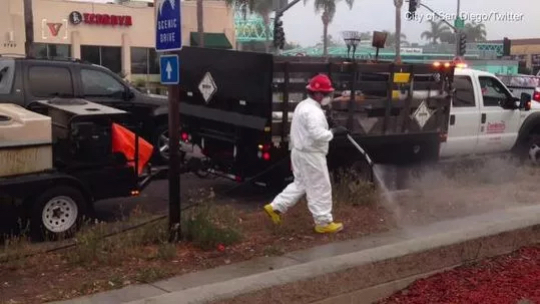The outbreak of hepatitis A in California lead Governor Jerry Brown to declare a state of emergency on Friday so the inadequate federal supply of vaccines can be complemented with direct acquisition from manufacturers.
The federal government has provided 81,000 doses of the vaccine for the hepatitis A strain of the 1B genetic subtype, but California Department of Public Health epidemiologist Dr. Gil Chavez says that the supply is insufficient. The declaration will allow the department to “move very swiftly,” he said.
Statewide, the number of reported cases are three times those reported in 2015. San Diego County, which still struggles with a growing population of homeless people, reported its first case in March. This was followed by Santa Cruz County in April. In September, San Diego and Los Angeles counties declared local health emergencies.
So far, there have been a little under 600 cases reported in California, with the majority of cases being reported in San Diego County. Deaths have only been reported in San Diego County, with the count currently at 18.
This particular strain of the hepatis A virus is transmitted from person to person rather than through contaminated food, and the advice is to frequently wash the hands even after the vaccine has been administered. The majority of reported cases are either drug users, the homeless, or both, and this puts people with inadequate access to sanitation at highest risk because the strain is spread through contact with feces.
The threat in San Diego County is so serious that authorities have now resorted to sanitizing the streets.

Experts say that the death toll may not have peaked yet, and that the outbreak could take more than a year to abate. Even those that don’t exhibit the symptoms may be carrying the virus. Symptoms include “fatigue, low appetite, stomach pain, nausea, and jaundice, that usually resolve within two months of infection.”
Aside from the homeless and drug users, the most at-risk population is food handlers, first responders, health care professionals, service workers and those helping in substance abuse programs, as well as workers in public transit systems.
The worse could be still to come because symptoms often don’t show up after 50 days of the person being infected by the virus.


